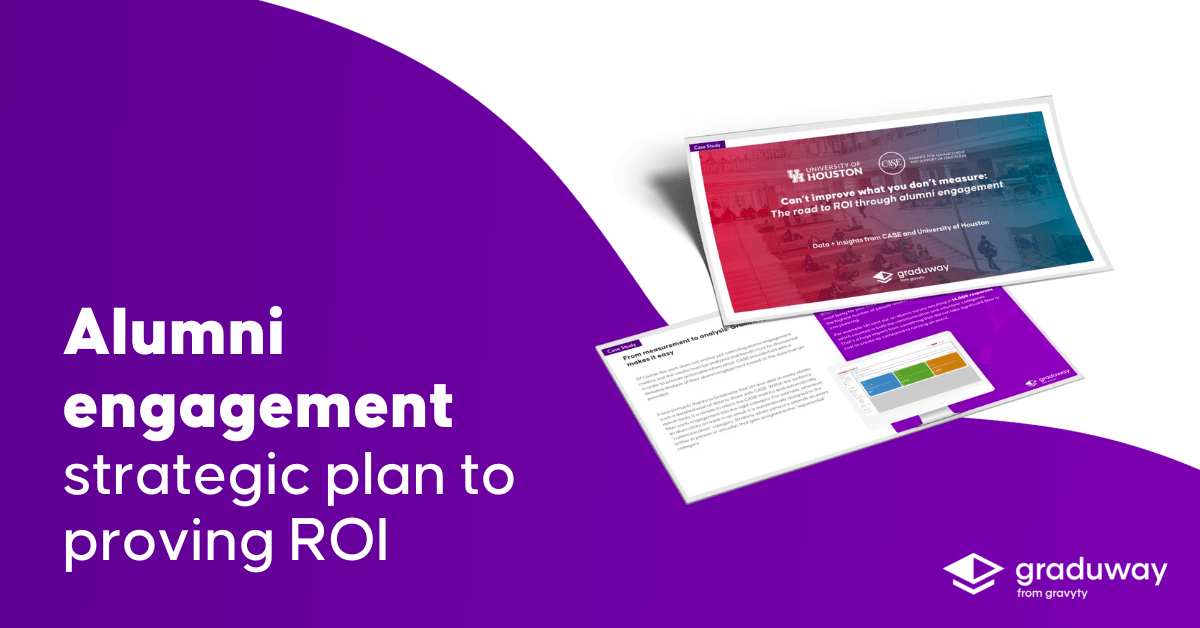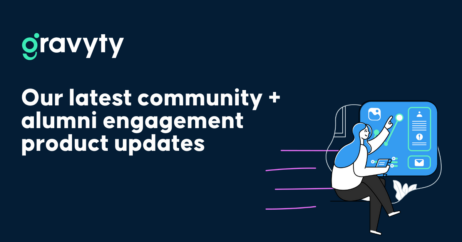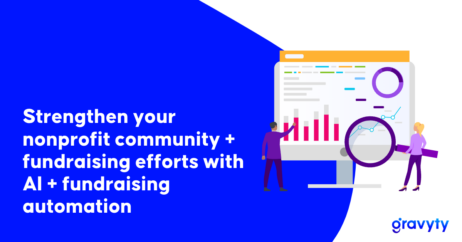Alumni engagement strategic plan to proving ROI

Data and insights from CASE and University of Houston
Measuring alumni engagement—the CASE method
Alumni relations offices do so much more than run fundraising events and campaigns. There are many different ways to get alumni engaged and involved in life on (and off) campus, yet for years the only true measure of alumni engagement success was based on philanthropic giving.
University of Houston’s Alumni Relations office was an early adopter of the CASE framework, an industry standard used for measuring alumni engagement created by the Global Council for the Advancement and Support of Education (CASE).
Get the case study
Can’t improve what you don’t measure: The road to ROI through alumni engagement
This method involves categorizing meaningful activities undertaken by the alumni relations department into one of 4 modes:
- Philanthropic
- Volunteerism
- Experiential
- Communication
By putting a number on whether an alum engaged within the mode at least once during the year, schools can get a much more accurate reading of how successful their alumni relations efforts are as well as which areas have room for improvement.
University of Houston’s alumni engagement strategic plan
Creating an online community for University of Houston alumni became a stronger need than ever during the Pandemic, driven primarily by requests from alumni for career services help. Because in-person events were not possible, it was clear that a digital solution was the answer and the Coogs Connect community became a strong need.
The platform, powered by Graduway from Gravyty, immediately added value giving alum from the greater Houston area and beyond the ability to connect with each other for networking and mentorship opportunities and more. The University was able to give their alumni the services they were looking for, while also upgrading their alumni directory and collecting and tracking more information than ever before.
Because of their adoption of the CASE method, UH also knew that this data would be valuable in being able to properly measure alumni engagement. Here are the top lessons that they learned from their experience measuring alumni engagement and how Graduway helped with collecting alumni engagement metrics:
Group all events into appropriate buckets
Following the CASE method’s four categories of philanthropy, volunteer, experiential and communication, UH categorized each and every alumni-related activity or interaction into the appropriate bucket.
If an event is not “credited” to a certain category, it does not get “counted” in the official alumni engagement report, so it is crucial to properly label every meaningful engagement. CASE provides guidelines and assistance to help determine in which category an interaction falls whenever there are questions. Only events that fall into a category are counted towards the alumni engagement number, so it might make sense to reconsider any event that does not have a place as it is unlikely to provide any meaningful engagement.
UH assigned codes to each interaction so that they could easily track participation in their CRM and pull up the information when it was time to run reports.
Get buy-in from leadership
Because UH is a massive school with several campuses, there is more than one alumni office. Without the participation and cooperation of each office for their alumni engagement strategic plan, it would be impossible to ensure that all meaningful interactions with alumni were being accurately tracked.
It is crucial to get the top leadership of the university on board to make it clear how important it is for everyone to work together to collect the appropriate alumni engagement metrics.
Understand the data sources
Because tracking alumni engagement metrics requires looking at so many different types of activities, it is natural that the data will be stored in a number of different sources. At UH, for example, they drew information from at least nine sources into their main CRM. These sources included contact reports, email campaigns, information from volunteers, an oral history project, and the Coogs Connect alumni platform among others.
Get the case study
Can’t improve what you don’t measure: The road to ROI through alumni engagement
When analyzing the information coming from different sources, it is important to understand the context in which the data was collected and other factors that may contribute to its level of accuracy. An automated tool, for example, is likely to be much more accurate than handwritten notes based on a conversation with a volunteer.
From measurement to analysis of your alumni engagement strategic plan, Graduway makes it easy
Of course the work does not end by just collecting alumni engagement metrics, but the results must be analyzed and trends must be discovered in order to provide actionable information. CASE provided UH with a detailed analysis of their alumni engagement based on the data that UH provided.
It was primarily thanks to Graduway that UH was able to easily obtain such a detailed level of data to share with CASE. Within the system’s admin tools, it is simple to select the CASE metrics and automatically filter each engagement into the right category. For example, whenever an alum clicks on a link in an email, it is automatically assigned to the “communication” category. Similarly, when someone attends an event (either in person or virtually), that gets assigned to the “experiential” category.
Learn how Graduway from Gravyty enables you to engage your alumni anytime, anywhere. Get a demo.




